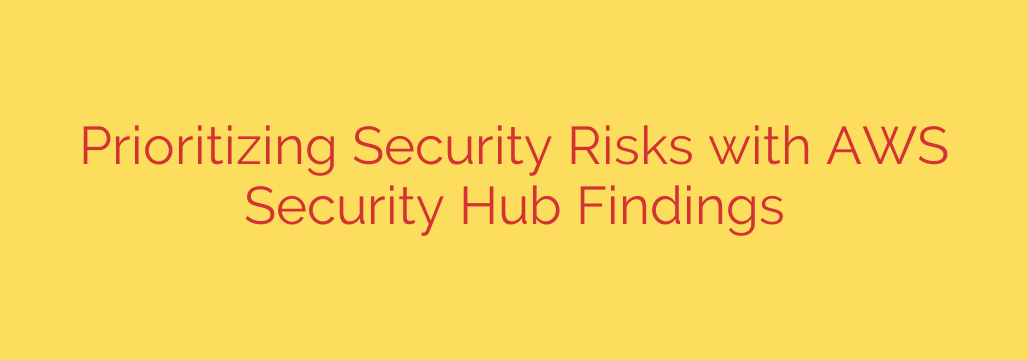
Effectively managing cloud security risks requires a strategic approach, especially when dealing with the high volume of alerts generated by modern environments. One key platform that aggregates security findings across an organization’s AWS accounts and services is instrumental in this process. However, simply collecting data is insufficient; the critical step is knowing how to prioritize these findings to focus on the most significant threats.
Without proper prioritization, security teams can quickly become overwhelmed, leading to crucial vulnerabilities being missed and resources being wasted on less impactful issues. A structured approach ensures that efforts are directed towards risks that pose the greatest potential harm to business operations, data confidentiality, and integrity.
Several factors should influence how findings are ranked. The most straightforward is the severity assigned to a finding. While standardized scores provide a baseline, context is crucial. A high-severity finding on a non-critical test resource may be less urgent than a medium-severity finding on a production database containing sensitive customer information. Therefore, understanding the importance of the affected asset is paramount.
Compliance requirements also play a significant role. Findings related to specific regulatory frameworks like PCI DSS, HIPAA, or GDPR often demand immediate attention to avoid penalties and maintain trust. Furthermore, analyzing the potential business impact of a successful exploit related to a finding helps quantify the risk in tangible terms, such as potential financial loss, service disruption, or reputational damage. Considering the type and confidence level of a finding also helps; a confirmed vulnerability requires different handling than a potential misconfiguration identified with lower confidence.
Leveraging the features within the security aggregation platform itself is key to implementing a robust prioritization strategy. Utilizing powerful filters allows teams to quickly isolate findings based on specific criteria like severity, account ID, resource type, or compliance standard. Insights, whether built-in or custom, provide aggregated views and trends, helping identify systemic issues or the most prevalent risks across the environment. For high-priority findings, automation integration can trigger immediate alerts, create tickets in workflow systems, or even initiate automated remediation actions, streamlining the response process.
Ultimately, mastering the art of prioritizing security findings transforms reactive alert fatigue into proactive risk management. By focusing on what matters most, organizations can significantly improve their security posture and efficiently allocate valuable security resources.
Source: https://aws.amazon.com/blogs/security/how-to-prioritize-security-risks-using-aws-security-hub-exposure-findings/








